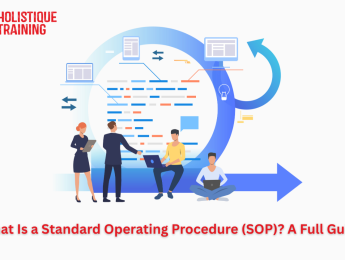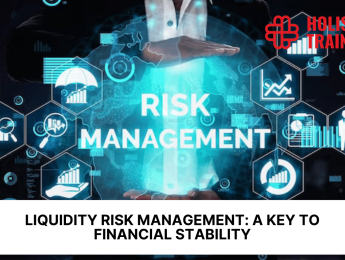- Table of Contents
- Introduction
- What is Silent Leadership?
- Characteristics of Silent Leadership
- 1. Active Listening
- 2. Empathy and Emotional Intelligence
- 3. Leading by Example
- 4. Confidence Without Arrogance
- 5. Adaptability
- 6. Focus on Team Development
- 7. Strong Relationship Building
- 8. Visionary Thinking
- Pros and Cons of Silent Leadership
- Pros
- Cons
- How to Lead by Example: Actions Speak Louder than Titles
- 1. Demonstrate Integrity
- 2. Be Present
- 3. Encourage Collaboration
- 4. Celebrate Achievements
- 5. Invest in Development
- 6. Practice Self-Reflection
- 7. Model Work-Life Balance
- Is Silent Leadership for You? How to Find Out
- 1. Do You Value Listening?
- 2. Are You Comfortable with Ambiguity?
- 3. Do You Prioritize Team Development?
- 4. Are You Open to Feedback?
- 5. Do You Believe in Leading by Example?
- Conclusion
Introduction
Leadership often conjures images of charismatic figures commanding attention and inspiring followers with grand speeches. However, there exists a contrasting approach known as silent leadership. This blog post delves into the essence of silent leadership, exploring its characteristics, advantages, and disadvantages. We will also discuss how actions can speak louder than titles and provide guidance on determining if silent leadership aligns with your personal style.
What is Silent Leadership?
Silent leadership is a subtle yet powerful form of leadership characterized by quiet influence rather than overt authority. It involves leading through example, integrity, and a deep understanding of team dynamics. Silent leaders often possess a strong sense of self-awareness and emotional intelligence, allowing them to connect with their teams on a profound level. They may not be the loudest voices in the room, but their presence and actions resonate deeply, fostering trust and respect.
This concept challenges the traditional notion that effective leaders must be vocal and assertive. Instead, silent leaders cultivate an environment where collaboration and mutual respect thrive. They understand that leadership is not solely about directing others but about empowering them to take ownership of their work. By embodying the values they wish to instill in their teams, silent leaders create a culture of accountability and motivation.
Characteristics of Silent Leadership
Understanding the traits that define silent leadership can illuminate its effectiveness. Here are some key characteristics:
1. Active Listening
Active listening is more than just hearing words; it involves fully engaging with the speaker, understanding their message, and responding thoughtfully. Silent leaders excel at this skill, creating an environment where team members feel heard and valued. They ask open-ended questions, encourage dialogue, and provide feedback that reflects their understanding. This practice not only fosters a sense of belonging but also encourages team members to share their ideas and concerns more freely. By prioritizing active listening, silent leaders can identify potential issues before they escalate and tap into the collective wisdom of their teams.
2. Empathy and Emotional Intelligence
Empathy is at the core of silent leadership. These leaders possess a keen ability to understand and relate to the emotions of their team members. They recognize that each individual brings their own experiences, challenges, and perspectives to the workplace. By demonstrating genuine concern for their colleagues' well-being, silent leaders build strong relationships based on trust and mutual respect. This emotional intelligence allows them to navigate sensitive situations with grace, offering support and guidance when needed. In doing so, they create a safe space for team members to express their thoughts and feelings, ultimately enhancing overall team cohesion.
3. Leading by Example
Silent leaders understand the profound impact of actions over words. They embody the values and principles they espouse, demonstrating integrity and accountability in their behavior. For instance, if a silent leader emphasizes the importance of teamwork, they will actively collaborate with their team rather than dictating tasks from a distance. By consistently modeling desirable traits, such as punctuality, dedication, and a strong work ethic, they inspire their teams to follow suit. This approach fosters a culture of excellence where team members feel motivated to emulate the positive behaviors exhibited by their leader.
4. Confidence Without Arrogance
While silent leaders may not seek the spotlight, they exude a quiet confidence that instills trust in their teams. This confidence is rooted in their competence and knowledge, allowing them to remain calm under pressure. Unlike more vocal leaders who may dominate conversations, silent leaders create space for others to contribute, showcasing their confidence in the abilities of their team members. This humility fosters an inclusive environment where everyone feels empowered to share their ideas and take initiative. As a result, team members are more likely to feel valued and respected, which enhances their overall engagement and commitment.
5. Adaptability
Silent leaders are adaptable and open to change. They understand that the business landscape is constantly evolving and are willing to adjust their strategies accordingly. This flexibility enables them to navigate challenges effectively, inspiring their teams to embrace change rather than resist it. For example, during times of organizational restructuring or shifts in market demands, silent leaders remain composed and proactive, guiding their teams through uncertainties. Their ability to pivot and find creative solutions encourages team members to adopt a similar mindset, fostering resilience and innovation within the group.
6. Focus on Team Development
A hallmark of silent leadership is a commitment to developing others. These leaders prioritize the growth of their team members, providing opportunities for skill enhancement and professional advancement. They take the time to understand each individual's strengths, weaknesses, and aspirations, tailoring their support to meet specific needs. This investment in personal development not only boosts individual confidence but also enhances team performance. By celebrating individual achievements and recognizing the collective success of the team, silent leaders reinforce a culture of collaboration and continuous improvement. This focus on development cultivates a sense of loyalty among team members, as they feel supported in their journeys and motivated to contribute to the team's success.
7. Strong Relationship Building
Silent leaders excel at building strong relationships within their teams. They prioritize interpersonal connections, taking the time to get to know their team members on a personal level. This investment in relationship-building fosters a sense of camaraderie and belonging, making team members feel valued beyond their roles. Silent leaders often engage in informal conversations, team-building activities, and social gatherings, creating opportunities for bonding and trust-building. By nurturing these relationships, they establish a foundation of loyalty and collaboration, ultimately enhancing team dynamics and productivity.
8. Visionary Thinking
While silent leaders may not always vocalize their vision, they possess a clear sense of direction and purpose. They are often strategic thinkers who can see the bigger picture and align their team's efforts with organizational goals. By quietly guiding their teams toward a shared vision, they inspire others to contribute to the collective mission. This visionary thinking allows silent leaders to navigate complexities and uncertainties, ensuring that their teams remain focused and motivated even in challenging times.
These characteristics collectively define silent leadership as a nuanced and impactful approach to guiding teams. By embodying these traits, silent leaders create an environment where collaboration, trust, and personal growth flourish, ultimately leading to enhanced team performance and satisfaction.
Pros and Cons of Silent Leadership
Like any leadership style, silent leadership has its advantages and disadvantages. Understanding these can help individuals determine if this approach aligns with their leadership philosophy.
Pros
1. Fosters Trust and Respect
Silent leaders cultivate an atmosphere of trust and respect through their attentive approach to leadership. By actively listening and valuing the input of their team members, they create a safe space for open dialogue. This trust is reinforced by their consistent actions, which align with their words. Team members are more likely to feel comfortable sharing their ideas, concerns, and feedback, knowing that their leader will genuinely consider their perspectives. This level of trust enhances collaboration and encourages a sense of community within the team, leading to stronger interpersonal relationships and higher morale.
2. Encourages Autonomy
Silent leadership empowers team members by encouraging autonomy in their work. When leaders provide space for individuals to make decisions and take ownership of their tasks, it fosters a sense of responsibility and accountability. Team members feel trusted to manage their work, which can lead to increased job satisfaction and motivation. This autonomy not only boosts individual confidence but also drives innovation, as team members are more likely to experiment with new ideas and approaches when they feel empowered to do so.
3. Promotes a Positive Work Culture
Silent leaders contribute significantly to creating a positive work culture. By prioritizing empathy, support, and recognition, they cultivate an environment where team members feel valued and appreciated. This positive atmosphere can lead to higher employee engagement, lower turnover rates, and improved overall performance. In fact,aGallup study revealed that managers are responsible for at least 70% of the differences in employee engagement levels.When team members feel that their contributions are acknowledged and celebrated, they are more likely to remain committed to their roles and the organization, fostering a sense of loyalty and belonging.
4. Effective Conflict Resolution
Silent leaders often approach conflicts with a calm and measured demeanor. Their ability to listen empathetically and understand multiple viewpoints allows them to navigate disagreements effectively. Instead of escalating tensions, they seek to mediate discussions and find common ground among team members. This constructive approach not only resolves conflicts but also strengthens relationships within the team. Team members learn to appreciate differing perspectives and develop better communication skills, leading to a more cohesive and collaborative work environment.
Cons
1. Perceived Lack of Authority
One potential drawback of silent leadership is that it may be perceived as a lack of authority or decisiveness. In environments where assertiveness is highly valued, silent leaders might struggle to assert their influence. Team members may question their leadership capabilities if they do not actively participate in discussions or assert their opinions. This perception can undermine their effectiveness, especially if team members look for a more dominant presence to guide them through challenges.

2. Risk of Being Overlooked
In a workplace filled with assertive personalities, silent leaders may risk being overlooked or underestimated. Their quiet nature might lead others to assume they lack valuable insights or contributions. This can result in missed opportunities for the leader to influence important decisions or initiatives. If team members do not recognize their leadership role, silent leaders may find themselves sidelined in discussions or decision-making processes, limiting their impact on the team.
3. Communication Challenges
While silent leaders are often skilled listeners, their quiet demeanor can lead to communication challenges. Team members may misinterpret their silence as disengagement or disinterest, which can hinder effective communication. Without clear verbal cues, team members might struggle to gauge their leader's thoughts or feelings on certain matters. This ambiguity can create confusion and may lead to misunderstandings within the team, impacting collaboration and productivity.
4. Difficulty in Providing Feedback
Silent leaders may find it challenging to provide directfeedback, especially in difficult situations. Their desire to avoid confrontation and maintain harmony can lead to hesitance in addressing performance issues or areas for improvement. This reluctance to give constructive criticism can hinder team growth and development, as team members may not receive the guidance they need to enhance their skills. Over time, this can create a culture where underperformance goes unaddressed, ultimately affecting the team's overall effectiveness.
In short, understanding the pros and cons of silent leadership is essential for individuals considering this approach. While it offers numerous benefits, such as fostering trust, encouraging autonomy, and promoting a positive work culture, it also presents challenges, including perceptions of authority, communication difficulties, and the risk of being overlooked. By being aware of these dynamics, aspiring silent leaders can leverage their strengths while addressing potential pitfalls, ultimately enhancing their effectiveness and the success of their teams.
How to Lead by Example: Actions Speak Louder than Titles
Leading by example is a fundamental principle of silent leadership, emphasizing the idea that true influence comes not from authority or titles but from one's actions and behaviors. Silent leaders understand that their conduct sets the tone for the team and shapes the organizational culture.In the episode of theLeadership Sandbox Podcast, Tammy Bond explores the vital importance of nonverbal communication in effective leadership. With nearly 93% of communication being nonverbal, Tammy highlights that actions frequently carry more weight than titles.Here are several strategies to effectively lead by example, illustrating how actions can indeed speak louder than words:
1. Demonstrate Integrity
Integrity serves as the cornerstone of effective leadership. Silent leaders must ensure that their actions consistently align with their values and principles. This means being honest, transparent, and accountable in all dealings. For instance, if a leader emphasizes the importance of ethical behavior, they must exemplify this by making ethical decisions, even when faced with challenges. By consistently demonstrating integrity, silent leaders build credibility and trust within their teams. Team members are more likely to emulate this behavior when they see their leader practicing what they preach, creating a culture of honesty and accountability.
2. Be Present
Being present—both physically and emotionally—is crucial for silent leaders. This means actively engaging with team members, showing genuine interest in their work, and being available to offer support. Silent leaders can cultivate this presence by participating in team meetings, checking in on colleagues, and making time for informal conversations. When team members see their leader actively involved and approachable, it fosters a sense of belonging and encourages open communication. This presence reassures team members that their contributions matter and that they are part of a collaborative effort.
3. Encourage Collaboration
Silent leaders can promote a collaborative environment by actively involving team members in decision-making processes. This includes seeking input on projects, encouraging brainstorming sessions, and facilitating discussions where everyone’s voice is heard. By valuing collaboration and demonstrating a willingness to incorporate diverse perspectives, silent leaders set a powerful example. This not only empowers team members to contribute their ideas but also fosters a culture of teamwork and shared responsibility. When team members witness their leader prioritizingcollaboration, they are more likely to engage with one another and work together effectively.
4. Celebrate Achievements
Recognizing and celebrating both individual and team accomplishments is an essential aspect of leading by example. Silent leaders should take the time to acknowledge the hard work and successes of their team members, whether through public recognition in meetings, personalized notes of appreciation, or team celebrations. By celebrating achievements, silent leaders reinforce a positive culture and motivate others to strive for excellence. This practice demonstrates that success is valued and encourages a sense of pride and ownership among team members. When individuals feel appreciated for their contributions, they are more likely to remain engaged and committed to their work.
5. Invest in Development
A commitment to the growth and development of team members is a hallmark of silent leadership. Silent leaders should actively seek opportunities forprofessional development, such as training programs, mentorship, and skill-building workshops. By investing in their team’s growth, they demonstrate their belief in each individual’s potential. This not only enhances team members’ skills but also fosters loyalty and motivation. When team members see their leader prioritizing their development, they feel supported in their career journeys and are more likely to contribute positively to the team’s success.
6. Practice Self-Reflection
Self-reflection is a critical component of effective leadership. Silent leaders should regularly assess their leadership style, decisions, and interactions with team members. This involves seeking feedback from colleagues and being open to constructive criticism. By reflecting on their actions and considering areas for improvement, silent leaders demonstrate humility and a commitment to personal growth. This practice not only enhances their leadership effectiveness but also sets an example for team members, encouraging them to engage in self-reflection and continuous improvement.
7. Model Work-Life Balance
Leading by example also involves demonstrating the importance of work-life balance. Silent leaders should prioritize their well-being and encourage their team members to do the same. This can include setting boundaries around work hours, promoting flexible working arrangements, and encouraging time off for rest and rejuvenation. By modeling a healthy work-life balance, silent leaders create an environment where team members feel empowered to prioritize their own well-being. This approach fosters a culture of sustainability and productivity, ultimately leading to higher job satisfaction and lower burnout rates.
To sum up, leading by example is a powerful tool for silent leaders. By embodying the values they wish to instill in their teams, they create a culture of integrity, collaboration, and growth. Through actions that demonstrate integrity, presence, collaboration, recognition, investment in development, self-reflection, and work-life balance, silent leaders can inspire their teams to follow suit. Ultimately, when leaders prioritize leading by example, they cultivate an environment where team members feel valued, engaged, and motivated to contribute to the collective success of the organization.
Table: Key Performance Indicators (KPIs) of Silent Leaders
Key Performance Indicator | Description |
Employee Engagement Score | Measures team members' commitment and enthusiasm |
Collaboration Rate | Tracks the frequency of team interactions and joint efforts |
Feedback Utilization | Evaluates how well feedback is integrated into practices |
Retention Rate | Measures the percentage of employees who stay over time |
Team Performance Metrics | Assesses the achievement of team goals and objectives |
Is Silent Leadership for You? How to Find Out
Determining if silent leadership aligns with your personal style involves introspection and self-assessment. Here are some questions to consider:
1. Do You Value Listening?
If you prioritize listening over speaking and believe in the power of understanding others' perspectives, silent leadership may resonate with you. Reflect on how you engage with your team and whether you actively seek their input.
2. Are You Comfortable with Ambiguity?
Silent leaders often navigate uncertainty with grace. If you can remain calm in challenging situations and adapt to change, this leadership style may suit you. Consider how you handle ambiguity and whether you embrace it as an opportunity for growth.
3. Do You Prioritize Team Development?
If you find fulfillment in helping others grow and succeed, silent leadership aligns with your values. Reflect on how you support your team members in their professional journeys and whether you actively seek to foster their development.
Table: Silent Leadership vs. Other Leadership Styles
Leadership Style | Characteristics | Best Suited For |
Silent Leadership | Active listening, empathy, leading by example | Collaborative environments, team-focused cultures |
Authoritative Leadership | Clear direction, strong decision-making, assertive | Crisis situations, goal-oriented teams |
Transformational Leadership | Inspires change, motivates through vision, encourages innovation | Dynamic environments, organizations needing change |
4. Are You Open to Feedback?
Research indicates that while 95% of individuals believe they are self-aware, the actual figure is only between 10 to 15 percent.Self-awareness is actually crucial for silent leaders. If you are receptive to feedback and willing to make adjustments based on others' insights, you may thrive in this leadership style. Consider how you respond to constructive criticism and whether you view it as an opportunity for growth.
5. Do You Believe in Leading by Example?
If you resonate with the idea that actions speak louder than titles, silent leadership may be a natural fit for you. Reflect on how you embody the values you wish to instill in your team and whether you prioritize leading through example.
Conclusion
Silent leadership represents a compelling alternative to traditional, assertive leadership styles. By embodying qualities such as active listening, empathy, and integrity, silent leaders create environments where collaboration and trust thrive. While this approach has its pros and cons, it offers a unique pathway for individuals who prefer to lead through influence rather than authority.
Ultimately, the effectiveness of silent leadership lies in its ability to empower teams, foster positive work cultures, and encourage personal and professional growth. As you consider your own leadership style, reflect on the principles of silent leadership and explore how they can enhance your approach. Whether you choose to embrace this style or blend it with other methods, the key lies in recognizing the power of influence and the impact of leading by example.
To further develop your skills in this area, consider enrolling in our course, "Effective Communication as a Leader." This course provides valuable insights into enhancing your communication abilities, fostering collaboration, and building trust within your team. By mastering effective communication, you can elevate your leadership style, whether you lean towards silent leadership or prefer a more assertive approach. Join us to unlock your potential and transform your leadership journey!

























